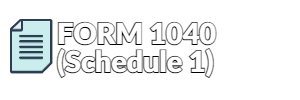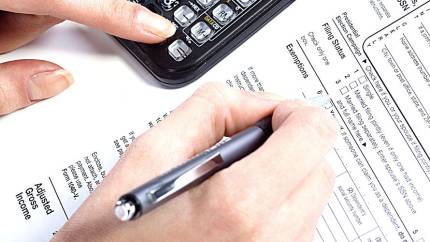Federal Tax Form 1040 (Schedule 1)
- 6 April 2023

So you're getting ready to tackle your taxes and you hear about this Schedule 1 attached to the good ol' Form 1040. Don't worry, we've got you covered! In this article, we will dive into the history, the purpose, and everything else you need to know about the tax form 1040 (Schedule 1) to make your tax filing experience a breeze.
A Blast from the Past: The History of Schedule 1 (Form 1040)
Schedule 1 (Form 1040) has been around since the Tax Cuts and Jobs Act (TCJA) was passed in 2017. The Internal Revenue Service (IRS) introduced the schedule to streamline and simplify tax reporting. The document separates additional income and adjustments to revenue, which were previously integrated into the main 1040 copy. This new structure made it easier for taxpayers to understand their tax obligations and claim various deductions and credits.
The 2023 Tax Year: Why You Need to Use IRS Form 1040 (Sch 1)
Fast forward to 2023, and the IRS Form 1040 (Sch 1) is still a crucial part of tax filing for many taxpayers. This schedule is necessary for those who have additional sources of income or adjustments to income that do not fit into the main 1040 sample. Some common examples include:
- Alimony received or paid
- Unemployment compensation
- Self-employment tax deductions
These additional income sources and adjustments are essential for determining your adjusted gross income (AGI) and taxable income, which ultimately affect your tax liability and eligibility for certain deductions and credits.
Exemptions from Filing Schedule 1 (Form 1040): Who's Off the Hook?
- Taxpayers with only W-2 income and no additional gains or adjustments
- Individuals who do not have any adjustments to income, such as self-employed taxpayers who are not claiming any deductions
- Taxpayers who are not required to file a tax return, such as those with income below the filing threshold
Curious Minds Want to Know: Top 3 Unusual Questions About IRS Form 1040 (Schedule 1) Printable
- Can I file Schedule 1 (Form 1040) separately from my main Form 1040?
Nope! Schedule 1 is an attachment to your main Form 1040, which means they must be submitted together. The information from your Schedule 1 will be used to calculate your AGI and taxable income on your main form. - What if I make a mistake on my Schedule 1? Can I fix it later?
Don't worry, errors happen! If you discover a mistake on your filed Schedule 1, you can file an amended return using Form 1040-X. This form allows you to make corrections to your income, deductions, and credits, including those reported on Schedule 1. - Are there any penalties for not filing Schedule 1 with my Form 1040?
If you're required to file Schedule 1 but fail to do so, you could face penalties and interest from the IRS. It's essential to carefully review the instructions for IRS Form 1040 (Sch 1) to ensure you're meeting all your tax obligations.


